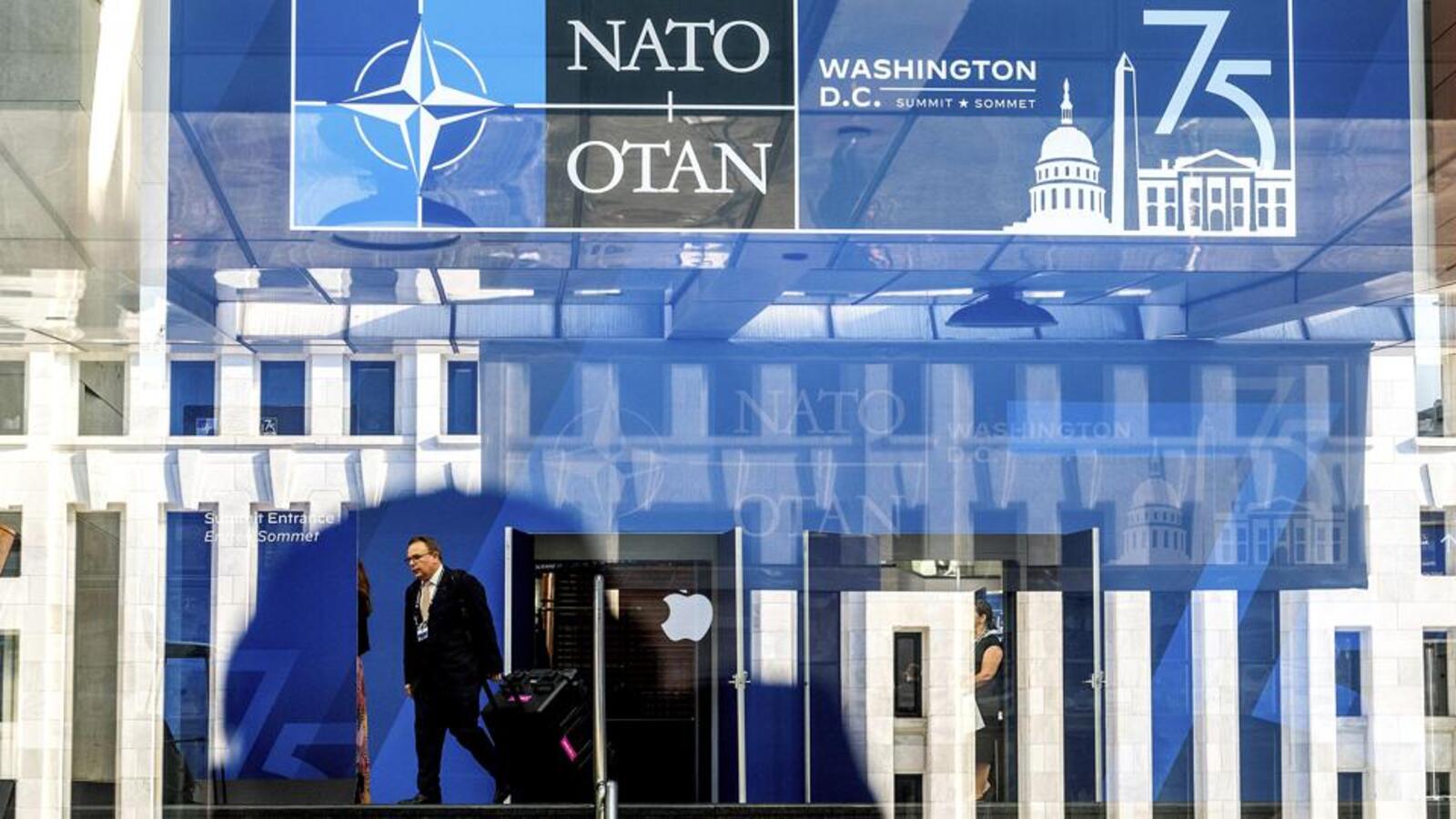World
In US, Nato at 75 grapples with internal and external crisis

Washington: The West has come home to Washington. To celebrate 75 years of the North Atlantic Treaty Organisation (Nato), the Trans-Atlantic military alliance formed during the Cold War to take on Soviet Union, American, European and a set of Asian leaders are congregating in downtown DC this week at the same site where the alliance was founded.
But the summit of celebration is turning into a summit of crisis as the US-led bloc confronts both an existential internal political challenge from the rise of the political Right at home and deepening external challenge from the China-aided Russian advances in Ukraine at its borders.
The twin challenges have created a sombre mood among leaders, officials, and experts. But they also believe that the summit offers an opportunity, possibly the last opportunity given the political mood in the US and the battlefield dynamics in Ukraine, to insure the alliance against future shocks.
The shadow of Trump
Every discussion on Nato, both among the bloc’s leaders and officials and among experts, now revolves around the man who won’t be present at the summit; Donald Trump. The increasing possibility of Trump’s return to the White House after Joe Biden’s disastrous debate performance, the rise of the political Right in Europe itself, and the diminished appetite in much of the West to continue supporting Ukraine has complicated Nato’s planning in three respects.
One, the former US president has drawn a firm redline and categorically said that if Nato members don’t step up their financial contribution, the US will not meet the bloc’s Article 5 commitment that provides for collective defence, based on the premise an attack on one Nato member is an attack on all. At a campaign rally earlier this year, Trump said that a president of a “big country” had asked him if the US would protect the country from Russia if his country didn’t pay. Trump said he had told the president, “No. I would not protect you. In fact, I would encourage them to do whatever the hell they want.”
Nato officials and leaders have factchecked Trump, pointing out that 23 of the 32 alliance members spend more than two percent of their budget on defence, with some spending even more. On this issue of “burden-sharing”, those committed to the alliance believe that there is meeting ground with a possible Trump administration.
Two, Trump has repeatedly claimed that if he was in power, Russia would not have attacked Ukraine. In an interview in June, Trump categorically laid the blame for the Russian invasion on what he termed President Joe Biden’s “provocative rhetoric” on including Ukraine in Nato. “If you look at the rhetoric from Biden, it was the opposite of what he should have said.” Trump said that this was a clear “No-No” for Russia and should have been off the table. This isn’t entirely accurate, for Biden had said in the run-up to the war that Ukraine’s entry into Nato wasn’t on the anvil.
But since the war started, Ukraine has made a strong push to join the bloc and the Washington summit is expected to make a set of announcements outlining a “bridge” that will bring Kyiv to the bloc over the next decade or so. The summit will see enhanced aid to Ukraine and a set of bilateral security agreements that Nato members will enter into with Kyiv. While this appears to be a move to “Trump-proof” any future arrangement involving Ukraine, it will also make a peace deal with Russia more complicated.
And finally, Trump has said that if he wins the elections in November, he will ensure a peace deal in Ukraine before he takes office in January 2025. Trump hasn’t made clear the terms of the deal, but his statement has sparked fears among Nato leaders that a Trump-engineered deal will be on terms that will be favourable to Russia. This, they fear, will involve a division of Ukraine, shut the doors on Kyiv’s possible participation in European political architecture and Nato’s security architecture, and embolden Russian President Vladimir Putin to target Nato members, especially Baltic states, next.
When Europe and Indo-Pacific meet
This three-pronged internal crisis is accompanied by dual external crisis for Nato.
And that crisis stems from the fact that Ukrainian counter-offensive failed last summer, Russia has made significant military and territorial gains, the Russian economy remains resilient despite unprecedented western sanctions, and Putin today is stronger than he has been at any point since February 2022. And one major reason for this is China’s steady support for Russia, in a sign of how the Indo-Pacific and European theatres are getting integrated into a common front for the West.
In an interview with CBS News over the weekend, Nato secretary-general Jens Stoltenberg said, “The war in Ukraine demonstrates how closely Russia and China and North Korea and Iran are. China is the main enabler of Russia’s war of aggression against Ukraine. President Xi and President Putin, they all want Nato, the US, to fail in Ukraine. And if Putin wins in Ukraine, it not only would embolden Putin but also Xi. As the Japanese PM said, what happens in Ukraine today can happen in Asia tomorrow. It demonstrates that Nato is also important for the US in addressing China.”
Both US secretary of state Antony J Blinken and the head of American intelligence apparatus, Avril Haines, have also said that China’s support to Russia is among the primary reasons for the shift in the battleground dynamics.
The fact that Japan, South Korea, Australia and New Zealand will be present at the Washington summit for the third year in a row is evidence of how both the US, but also its Indo-Pacific treaty allies, have begun to adopt a common frame to view the Russia-China-North Korea axis.
How the Washington summit addresses this conundrum of low morale among Nato members, the political uncertainty at home especially the US, and the enhanced strategic threats from a set of West’s adversaries working in coordination with each other will be the alliance’s real test.










